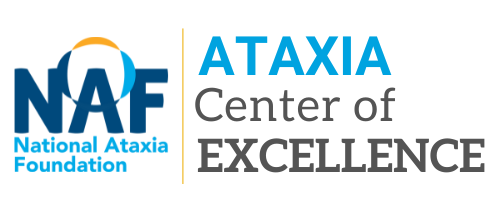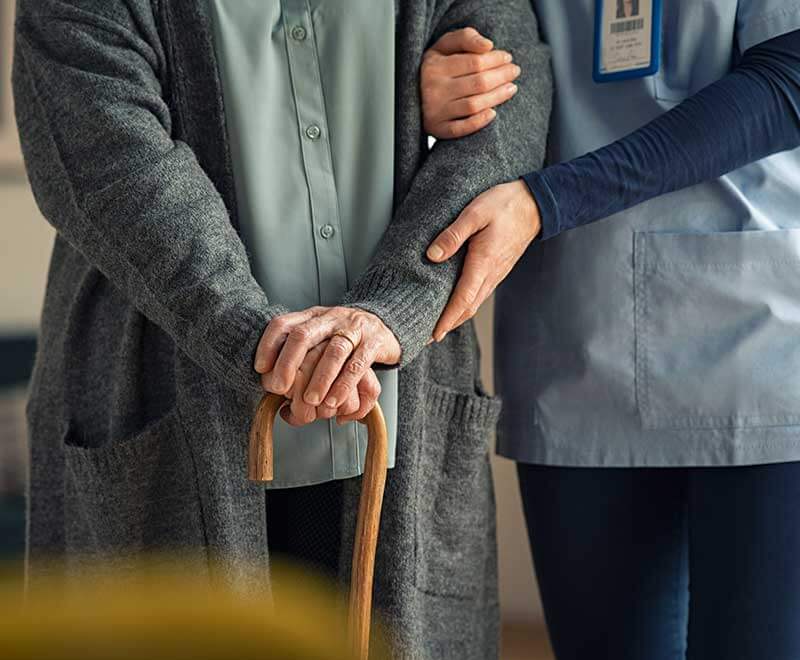The Johns Hopkins Ataxia Center offers a multispecialty approach to the diagnosis and treatment of cerebellar ataxia. We work with patients whose ataxia symptoms are worsening over time to offer long-term care and help navigating the symptoms and underlying conditions. The large number of patients we treat gives our specialists exceptional expertise in assessing, diagnosing and treating the full range of ataxia symptoms. Our specialists are researcher-clinicians who incorporate the latest scientific findings on ataxia into your treatment plan.
-
Meet Our Team
Our center combines expertise of many specialists who work together to provide comprehensive care to people with cerebellar ataxia.
-
Appointment Information
Read how to prepare for your appointment and what to expect during your first visit.
-
Patient Resources
Find resources from our center and other organizations, including exercises, symptom management, support groups, newsletter and more.
Johns Hopkins Ataxia Center | Overview
The center was founded by and continues to be supported thanks to philanthropic investments from the Gordon and Marilyn Macklin Foundation and with the advocacy of the National Ataxia Foundation.
Why Choose Johns Hopkins for Ataxia Care
Multi-Specialty Approach
Our neurologists are familiar with the nuances of ataxia and related disorders. They work closely with other specialists to offer a whole-person assessment and treatment.
Convenient Appointments
Patient Education
A big part of our mission is public and physician education. Our patients have access to educational resources, activities and support groups about ataxia, and have an opportunity to participate in scientific studies and join in our quest to better understand and treat ataxia.
Ataxia Research
-
Dr. Zee's laboratory has a major research focus on the cerebellum and its role in control of eye movements. His group is specifically interested in how the cerebellum contributes to normal learning new motor behaviors, and to adaptation to disease in the eye movement system. Their overarching goals are to understand how the brain learns and how learning might be promoted in patients, and especially cerebellar patients, to improve their vision and ability to move their eyes accurately. Their research tools include the study of eye movements of normal subjects and cerebellar patients, the study of learning processes in normal subjects and cerebellar patients, and how artificial stimulation of the cerebellum might improve eye movement control and improve visual function.
-
The work in the Shadmehr Lab uses mathematics, robotics, and brain imaging to precisely quantify the function of the cerebellum during voluntary movements. The lab has developed specialized equipment to examine movements of the arm and the eyes. The aim of the work is to not only better understand the basic function of the cerebellum, but to help cerebellar patients recover some of the lost function through focused training of the remaining, healthy portions of the brain.
-
Dr. Bastian and her colleagues study the movements of adults and children who have cerebellar damage or disease. Her group is interested in understanding why movement patterns become faulty (ataxic), as well as if and why different treatments can mitigate ataxia. She is also actively studying how new movements are "learned" in individuals with and without ataxia.
The Bastian Lab employs several techniques to quantify movement including: 3-dimensional tracking and reconstruction of movement, recordings of muscle activity, force plate recordings, and calculation of joint forces and torques. These techniques allow for very precise measurements of many different types of movements including: walking, reaching, leg movements, hand movements and standing balance. The quantitative information gained from her studies make it possible to detect very small changes in movement performance over time or with treatment.
-
Dr. Cullen's lab investigates how the cerebellum allows us to defy gravity as we stand, walk, reach and run in our daily lives. Using neurophysiological studies and theoretical models, the lab explores how neural computations in the cerebellum ensure robust postural and balance control. Their research aims to enhance our functional understanding at the neural and circuit levels that are crucial for optimizing motor performance during active movements. Additionally, the lab applies these insights to advance our understanding of genes, neurons, and circuits in healthy brains, translating them to improve outcomes for patients with cerebellar impairments.
-
Dr. Ankur Butala works in close collaboration with colleagues, Dr. Najim Dehak and Dr. Laureano Moro-Velazquez from the Whiting School of Engineering, Center for Language and Speech Processing to develop new technologies to diagnose and monitor movement disorders. In particular, they are utilizing simultaneous multi-modal records of eye movements, speech, handwriting/drawing and gait to provide wholistic measurements of an individual's movement, which can be used to diagnose or track disease evolution. They are working on several innovative technologies, including machine learning and artificial intelligence, to enhance the quality of lives of persons with dysarthric speech and creating unified databases to optimize gait measures across many movement disorders.

Center of Excellence
Our center has been designated as an Ataxia Center of Excellence by the National Ataxia Foundation in recognition of the comprehensive ataxia care we provide.


